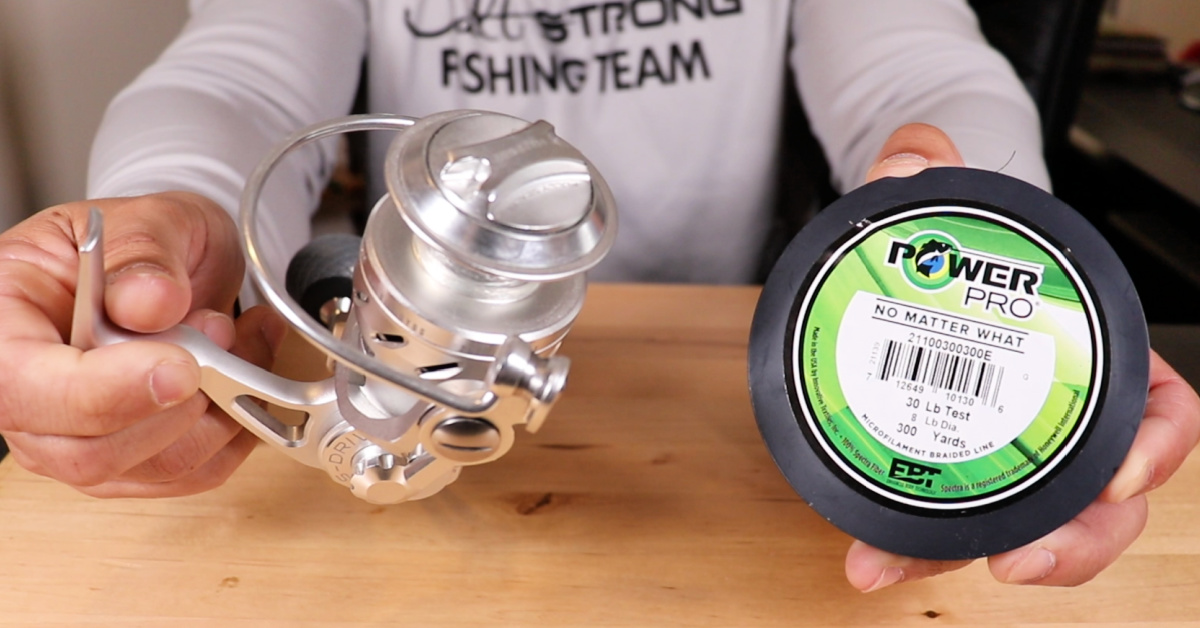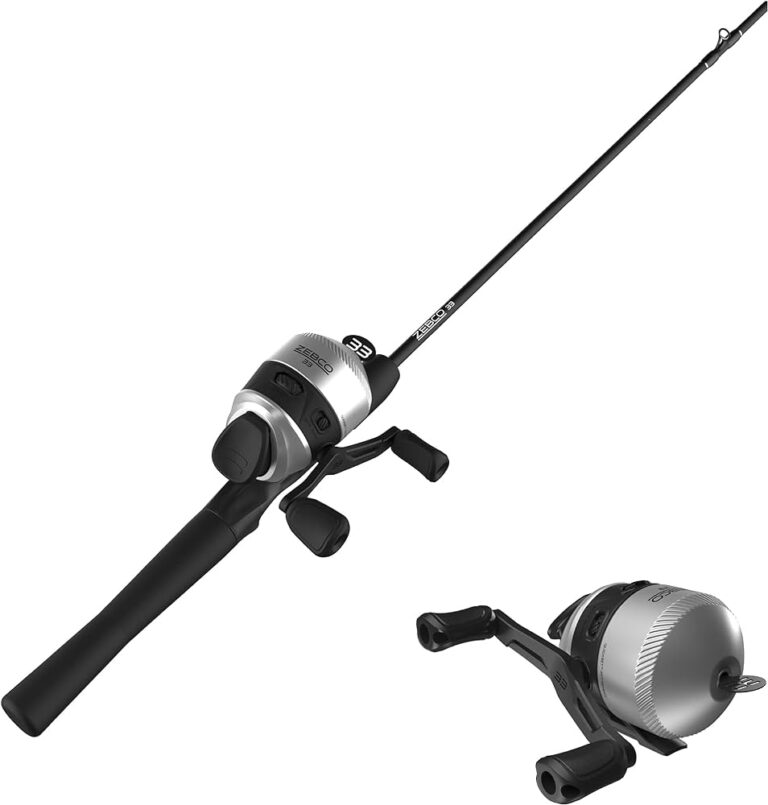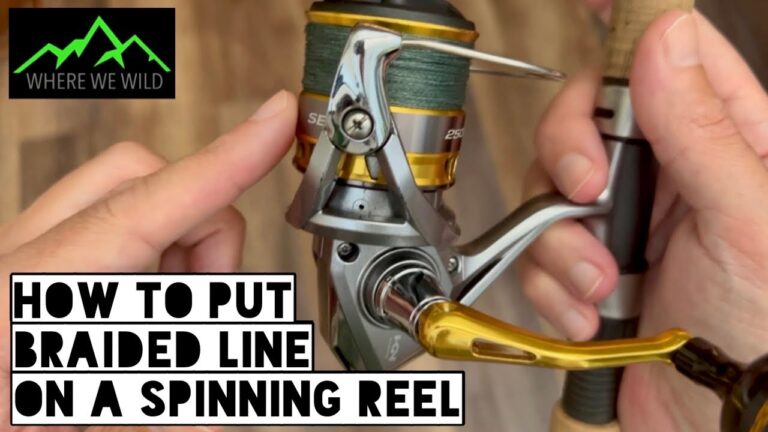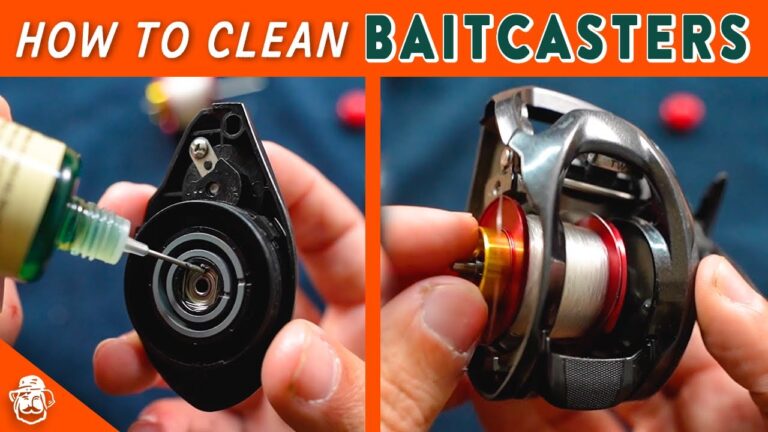How to Put Line on a Spinning Reel Without Twist

To put line on a spinning reel without twist, first open the bail, then attach the line with an arbor knot. Ensure the line feeds off the spool in the same direction that it goes onto the reel.
Spinning reels are quintessential for both novice and seasoned anglers, valued for their versatility and ease of use. Avoiding line twists during the spooling process is critical to prevent line management issues and to ensure a smooth cast. A common mistake is to overlook the direction in which the line unwinds.
Matching the line’s unwinding direction with the reel’s rotational direction is a simple yet effective way to minimize twist. Mastering the art of loading your reel correctly can drastically improve your fishing experience. This guide is tailored to help you set up your spinning reel like a pro, ensuring you spend more time catching fish and less time dealing with the frustrations of a twisted fishing line.
Preparation Steps
Gather all the needed tools before adding line to your reel. This includes scissors, clean cloth, and the new fishing line. Also, make sure to have a spinning reel and rod ready. Keeping your gear organized will make the process smoother.
| Fishing Line Type | Key Characteristics |
|---|---|
| Monofilament | Stretchy and floats well |
| Braided | Strong and thin |
| Fluorocarbon | Invisible underwater |
Understand the line type that fits your fishing needs. Monofilament is common and user-friendly. Braided line is strong for its diameter. Fluorocarbon is nearly invisible to fish. Pick the right type to avoid line twists. Check the reel’s capacity to choose the correct line strength and length.
Attaching The Reel To The Rod
Securing the reel properly ensures effective performance on the water. Begin by opening the reel seat on the rod. Then, place the reel in the seat, taking care to align the reel foot with the guides on the rod. The alignment of the reel and rod is crucial; the line must run directly through the rod’s guides.
Once positioned, tighten the reel seat until the reel is snug. Ensure there is no wobble or play to avoid line twists. A firm, not overtightened, reel will cast and retrieve smoothly. It is essential to check that the reel handle is on the correct side. Right-handed fishers usually have it on the left, and vice versa for left-handed fishers.
Loading The Line
Begin loading the line on your spinning reel by first opening the bail. Grip the line 1 to 2 inches above the reel. Slide the line through each of the rod guides, starting from the bottom and working upwards. Ensure the line remains untangled for a smooth process.
Next, employ one of several knotting techniques to secure your line firmly. The Arbor knot is a popular choice for its simplicity and strength. Double the line over to create a loop, and tie a simple overhand knot around the main line. Pull tight for a secure connection to the reel’s spool. Trim any excess line to maintain neatness.

Credit: m.youtube.com
Avoiding Line Twist
Correct Spool Orientation plays a key role in avoiding line twist. Make sure the line comes off the spool in the same way it will go onto the reel. This keeps the line smooth and straight.
Tension Control During Winding is crucial. A consistent tension prevents loops and kinks. Use your fingers to apply slight pressure as the line wraps around the reel. This method prevents twists and ensures a firm, even line lay.
Filling The Spool
Attaining the ideal line capacity on your spinning reel ensures optimal performance. Begin by checking the reel for recommended line capacity, usually found on the spool. This information indicates the line thickness and the maximum line length that the spool can hold. Adhering to these specifications prevents problems such as line twists and tangles.
After filling the spool, finishing touches are crucial. Use scissors or nail clippers to cut the excess line. Leave enough line to thread through the rod guides and tie your lure or hook. Ensuring the line is trimmed cleanly can reduce wind knots and maintain smooth casting.

Credit: www.ultimateangling.co.za
Maintenance Tips
Periodic line replacement is crucial for optimal reel performance. Over time, fishing line can develop memory, leading to unwanted twists and potential snags. To ensure peak performance, replace your line at least once a season, or more often if you fish frequently. Selecting a quality line and keeping it clean and dry will also reduce twisting.
Proper storage is key to preventing line twists in spinning reels. Always lay your reel horizontally when not in use. Tension can be maintained on the line by using a rubber band or reel clamp. This prevents the line from loosening and twisting when stored. By adhering to these storage methods, your reel will remain twist-free and ready for your next fishing trip.

Credit: www.saltstrong.com
Frequently Asked Questions On How To Put Line On A Spinning Reel Without Twist
How Do You Prevent Line Twist On A Spinning Reel?
To prevent line twist on a spinning reel, always spool the line correctly, aligning the reel and filler spool. Use quality line and replace it regularly. Employ swivels with lures that spin, and manually flip the bail arm after casting to maintain line integrity.
How Do You Put Line On A Fixed Spool Reel?
Open the bail arm on your fixed spool reel. Thread the line through the rod guides. Tie the line to the spool using an arbor knot. Close the bail arm manually. Turn the handle to wind the line onto the spool evenly, applying slight tension.
How Do You Load Line On A Spinning Reel?
Open the bail on your spinning reel and tie the line to the spool. Close the bail, then hold the line with slight tension. Slowly crank the handle to evenly wind the line onto the spool, ensuring it lays flat without twists.
How Do You Put Line On A Closed Reel?
Open the bail on your closed reel. Thread the line through the rod’s guides. Tie the line to the spool with an arbor knot. Close the bail and turn the handle to wind the line onto the reel, maintaining tension.
Trim any excess line.
Conclusion
Master the art of spooling your spinning reel with these easy tips, and bid farewell to the frustration of line twists. Practice leads to perfect casts and enjoyable fishing trips. Share your newfound skills with fellow anglers, and let the serenity of a tangle-free line enhance your next water adventure.
Cast away!



